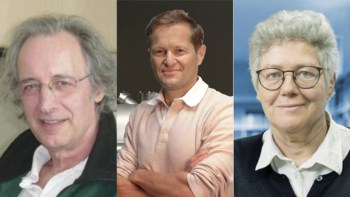The world's most accurate atomic clock - which uses the oscillations of visible light as a 'pendulum' - has been developed by Thomas Udem and colleagues at the National Institute of Standards and Technology and the University of Colorado in the US. The 'optical clock' is around seven times more accurate than existing atomic clocks, which are based on longer-wavelength microwave signals. Udem's team used a 'frequency comb' to link the high-frequency optical signal emitted by a mercury ion to a more manageable microwave frequency (S Diddams et al 2001 Science 293 825).
The second is currently defined as the time it takes for the radiation corresponding to a certain energy gap in a caesium atom to complete 9192 631 770 oscillations. This technique clearly depends on our ability to count the oscillations reliably. Existing atomic clocks are accurate to one part in 1015, but optical signals are desirable because they could provide an even more accurate definition of the second. A higher-frequency signal oscillates more often – in effect, the ‘pendulum’ swings more quickly – but it is much harder to count these oscillations.
In the past, a complicated ‘frequency chain’ was needed to relate optical signal to microwave signals, whose oscillations are easier to count. But the set-up was cumbersome and difficult to operate. Last year Udem and colleagues developed a ‘frequency comb’ that replaces the frequency chain with a femtosecond laser and a photonic fibre – an optical fibre with an array of tiny holes running along its core.
“Our optical clock promises accuracy that would be difficult to achieve with current atomic clocks based on microwave transitions”, say Udem and colleagues. “There is little dispute that accurate microwave atomic clocks have greatly improved navigation and communication. It is likely that optical clocks of the future will have a similar impact.”



